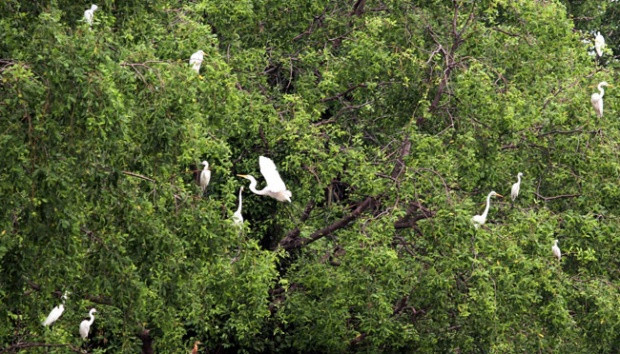Popular Reads
Top Results
Can't find what you're looking for?
View all search resultsPopular Reads
Top Results
Can't find what you're looking for?
View all search resultsNorth Jakarta sees growth of 32,000 mangrove trees
The mangrove trees include the pidada (Sonneratia), api-api (Avicennia), nipa palm (Nypa fruticans), and red mangrove (Rhizophora), Said explained.
Change text size
Gift Premium Articles
to Anyone
North Jakarta has seen the growth of 32,000 trees since they were planted 10 years ago at the Ecomarine Mangrove Forest.
The trees were planted on 1.8 hectares of land that was initially barren before it was converted into a forest on the edge of the Kali Adem Estuary in Muara Angke.
“From 2008 until now, 32,000 mangrove trees have grown here,” said Muara Angke Mangrove Community head Muhammad Said as quoted by tempo.co on Wednesday.
The mangrove trees include the pidada (Sonneratia), api-api (Avicennia), nipa palm (Nypa fruticans), and red mangrove (Rhizophora), Said explained.
The trees were planted to recover the mangrove forest ecosystem along Jakarta's northern coast, which is threatened by land conversion.
“There were mangroves, but in the 1990s they were wiped out due to the impact of development. In 2008, we established a mangrove community and started mangrove planting for the sake of caring for society and the environment,” he said.
In 2008, the community planted 100 mangrove seeds at the Kali Adem Estuary, which was once filled with plastic waste.
“This estuary is the end-point of 12 rivers in Jakarta. Garbage was piled up. We had to dig deeper into the land so that the mangrove roots could grow well,” he said.
Said also said the mangrove forest benefited the surrounding environment.
“Strong winds often enter houses, but now the wind is blocked by the mangrove trees. The trees' roots have also absorbed the high tide,” he said.
The trees have also benefited those who live nearby, as their fruits are used for fruit essence, dodol (traditional sticky candy) and jam.
Visitors can enter the forest for free. (sau)










